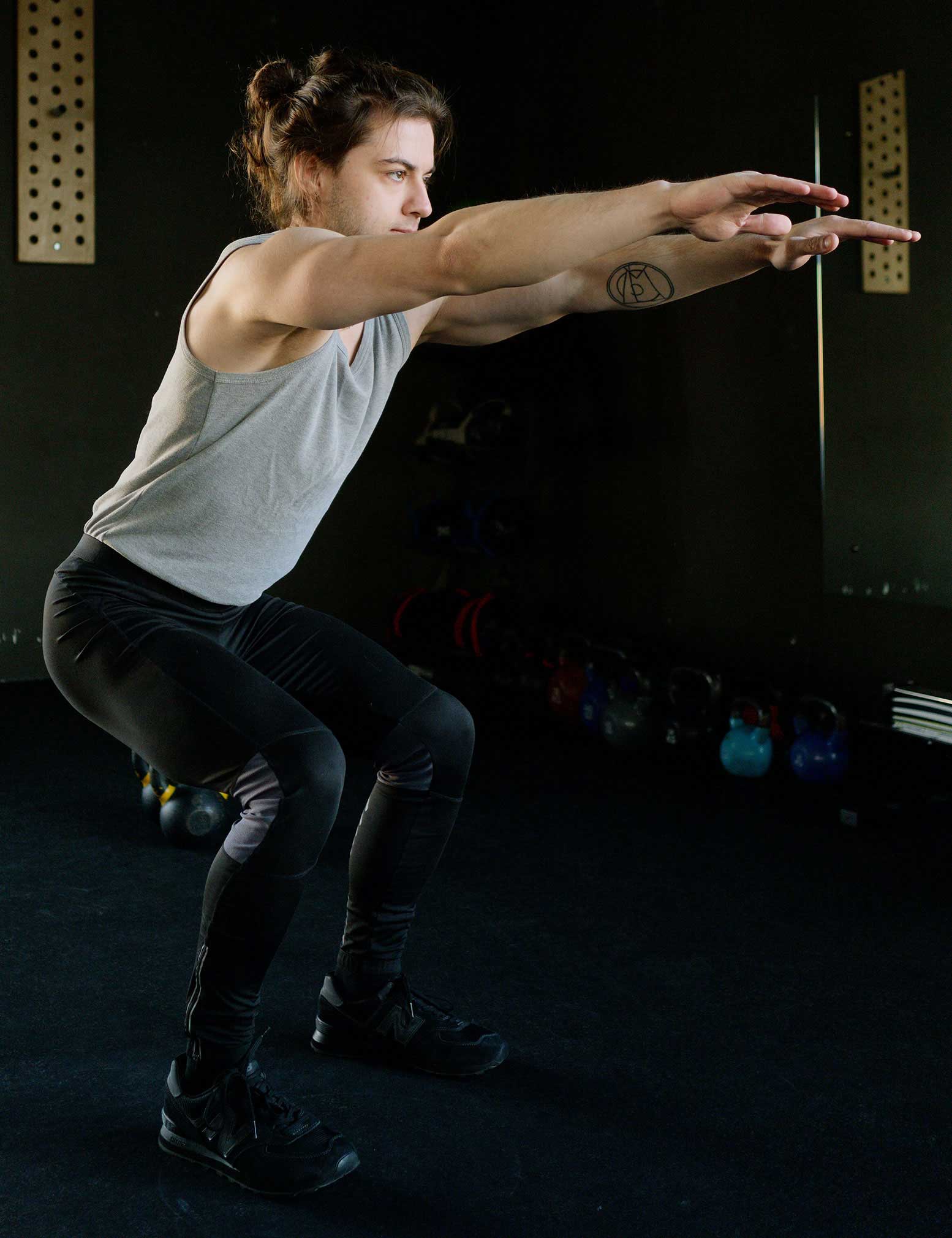E Exercise Techniques and Form
Perfecting Your Form: A Comprehensive Guide to Proper Exercise Techniques
By
Beauty Doctor MD October 4, 2023

Whether you’re a beginner taking your first steps into the world of fitness or an experienced athlete looking to refine your skills, one thing remains constant: the importance of proper exercise form. Correct form not only maximizes the benefits of your workouts but also minimizes the risk of injury. In this comprehensive guide, we will explore the significance of proper form, delve into the correct techniques for various exercises targeting different muscle groups, and offer practical tips to help you maintain impeccable form throughout your fitness journey.
The Importance of Proper Exercise Form
Proper exercise form is the foundation of safe and effective workouts. Here’s why it matters:
- Injury Prevention: Maintaining correct form reduces the risk of injuries. Poor form can strain muscles, stress joints, and lead to overuse injuries over time.
- Muscle Engagement: Correct form ensures that the intended muscles are actively engaged during an exercise. It prevents compensatory movements that might shift the load to the wrong muscle groups.
- Improved Results: Proper form optimizes the effectiveness of each exercise. When you perform movements correctly, you target the desired muscle groups more efficiently, leading to better results.
- Efficiency: Efficient movement patterns allow you to perform exercises with less effort, conserving energy and improving endurance.
- Long-Term Progress: Consistently using proper form enables steady progress in strength, endurance, and flexibility. It sets the stage for long-term success.
General Principles for Proper Form

Before we delve into specific exercises, let’s discuss some general principles that apply to most exercises:
- Maintain Neutral Spine: Keep your spine in a neutral position, which means maintaining the natural curve of your spine. Avoid excessive arching or rounding of the back, which can strain the spine and surrounding muscles.
- Engage Core Muscles: Activate your core muscles to stabilize your spine and protect your lower back. This is essential for exercises involving the upper body or lower body.
- Proper Breathing: Coordinate your breath with your movements. Typically, exhale during the concentric phase (the exertion phase) and inhale during the eccentric phase (the release phase) of an exercise.
- Control the Movement: Maintain control throughout the exercise, avoiding jerky or momentum-driven motions. This ensures that you’re working the intended muscle groups.
- Full Range of Motion (ROM): Perform exercises through their full range of motion, unless instructed otherwise. This helps improve flexibility and targets muscles more comprehensively.
Proper Form for Common Exercises
Now, let’s explore proper form for various exercises, categorized by muscle group.
- Lower Body Exercises

- Squats:
- Starting Position: Stand with feet shoulder-width apart.
- Execution: Bend your hips and knees simultaneously, lowering your body as if sitting back into a chair. Keep your chest up, knees aligned with your toes, and weight on your heels.
- Common Mistake: Allowing the knees to collapse inward.
- Lunges:
- Starting Position: Stand with feet together.
- Execution: Step one foot forward or backward, bend both knees to 90 degrees, and lower your body. Keep your torso upright and core engaged.
- Common Mistake: Allowing the front knee to extend past the toes.
- Deadlifts:
- Starting Position: Stand with feet hip-width apart, holding a barbell or dumbbells in front of you.
- Execution: Hinge at the hips while maintaining a neutral spine. Lower the weight until it reaches mid-shin level or just below the knees, then return to the starting position.
- Common Mistake: Rounding the lower back or jerking the weight up.
- Upper Body Exercises
- Push-Ups:
- Starting Position: Begin in a plank position with hands slightly wider than shoulder-width apart.
- Execution: Lower your body by bending your elbows, keeping them close to your sides. Maintain a straight line from head to heels.
- Common Mistake: Allowing the lower back to sag or the hips to rise.
- Pull-Ups:
- Starting Position: Hang from a pull-up bar with palms facing away and hands shoulder-width apart.
- Execution: Pull your body up by engaging the back and arm muscles. Keep your chest up and chin above the bar.
- Common Mistake: Swinging or using excessive momentum.
- Bench Press:
- Starting Position: Lie on a bench with feet flat on the floor and hands gripping the barbell slightly wider than shoulder-width apart.
- Execution: Lower the barbell to your chest, then press it back up to the starting position. Keep your back flat on the bench and feet planted.
- Common Mistake: Bouncing the bar off the chest or arching the back excessively.
- Core Exercises
- Planks:
- Starting Position: Begin in a push-up position with elbows under your shoulders.
- Execution: Hold your body in a straight line from head to heels, engaging your core muscles. Keep your hips level and avoid sagging.
- Common Mistake: Allowing the hips to rise or sag.
- Crunches:
- Starting Position: Lie on your back with knees bent and feet flat on the floor.
- Execution: Lift your shoulders off the ground by contracting your abdominal muscles. Keep your lower back in contact with the floor.
- Common Mistake: Pulling on the neck or using the arms to lift the body.
- Russian Twists:
- Starting Position: Sit on the ground with knees bent and feet lifted off the floor. Hold a weight or medicine ball with both hands.
- Execution: Rotate your torso to one side, bringing the weight close to the ground. Return to the center and repeat on the other side.
- Common Mistake: Rounding the back or not fully twisting the torso.
- Flexibility and Mobility Exercises
- Hamstring Stretch:
- Starting Position: Sit on the floor with one leg extended and the other bent so the sole of the foot rests against the inner thigh.
- Execution: Reach toward the extended leg, keeping your back straight and chest open. Hold the stretch for 20-30 seconds.
- Common Mistake: Forcing the stretch and rounding the back.
- Hip Flexor Stretch:
- Starting Position: Kneel on one knee with the other foot in front, creating a 90-degree angle at the front knee.
- Execution: Shift your weight forward, feeling a stretch in the front of the hip of the back leg. Keep your torso upright.
- Common Mistake: Leaning too far forward or arching the lower back.
- Child’s Pose (Yoga):
- Starting Position: Kneel on the floor with your big toes touching and knees apart. Sit back on your heels.
- Execution: Lower your torso toward the floor, extending your arms in front of you. Relax and breathe deeply.
- Common Mistake: Forcing the stretch and not relaxing into the pose.
Maintaining Proper Form: Practical Tips
To ensure you maintain proper form during your workouts, follow these practical tips:
- Educate Yourself: Learn the correct form for each exercise through reputable sources like fitness books, videos, or guidance from certified trainers.
- Start with Light Weights: When learning a new exercise, begin with lighter weights or resistance bands to master the form before progressing to heavier loads.
- Use a Mirror: Position yourself in front of a mirror to monitor your form. This can help you identify and correct mistakes.
- Record Yourself: Recording your workouts allows you to review your form and make necessary adjustments. Many smartphones have video recording capabilities.
- Seek Professional Guidance: Consider working with a certified personal trainer, especially if you’re new to exercise or want to refine your technique.
- Focus on Mind-Muscle Connection: Concentrate on the muscle groups you’re targeting during each exercise. This mental connection helps ensure you’re using proper form.
- Listen to Your Body: Pay attention to discomfort or pain during exercises. If something doesn’t feel right, stop the exercise and seek guidance.
- Warm-Up Adequately: Always warm up before your workouts to prepare your muscles and joints for exercise. This can reduce the risk of injury due to tightness or stiffness.
Conclusion
Proper exercise form is a fundamental aspect of any fitness routine. Whether you’re performing lower body exercises, upper body exercises, core workouts, or flexibility and mobility exercises, maintaining correct form is essential for safety and achieving your fitness goals. By adhering to the principles outlined in this guide and seeking guidance when needed, you can optimize your workouts, prevent injuries, and embark on a fitness journey that yields lasting results. Remember, the key to success in fitness lies not only in what you do but in how you do it.


